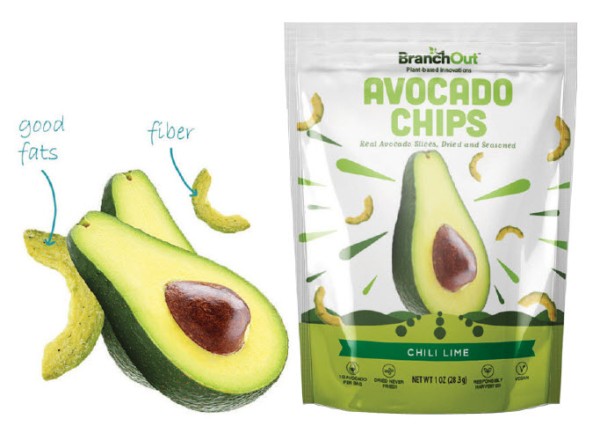BranchOut Food, Inc. (NASDAQ: BOF), fresh off its June IPO, is wasting no time making what could be transformative revenue-generating agreements. In June, they announced a 2,250-store supply deal with Walmart (NYSE: WMT). They followed that by announcing a commitment from Costco (NYSE: COST) to add its products to their Los Angeles region.
That commitment builds on an established working relationship with Costco, marking the fourth Costco region that BranchOut Food is selling into and adding to BOF’s ongoing operations in the Pacific Northwest, Northern California, and Texas regions. While COST sales can be challenging to assess, modeling the deal with WMT isn’t. And it exposes a significant value investment proposition.
In fact, certain assumptions, even conservatively based, generate a picture of how quickly BOF can transform itself from a niche specialty food supplier into a revenue-generating juggernaut. That assumption is not overzealous speculation. Quick math summarizes the opportunity currently in play.

Two Deals That Can Be Transformative
Assuming WMT purchases $1000 of products for each store, call it 250 bags at $4 wholesale, just from its initial placement BranchOut would book roughly $2.25 million in near-term revenues. Keep in mind that’s the initial shipment. If sell-through scores are as expected, follow-on orders will likely be significantly higher. But for conservative purposes, let’s assume that WMT maintains a similar monthly order.
In that case, BOF could generate about $27 million over the next 12 months. Then, assuming gross margins of 30%, it’s within reason to model for BOF to account for about $8.1 million in gross profits. That’s for the WMT deal alone. BOF bears may say that the model is too speculative and that there is a risk of orders being downsized. That argument was potentially strong until BOF announced its commitment from COST. How so?
Put simply, COST doesn’t make commitments to expand vendor relationships unless they are worthy. Remember, shelf space is the most valuable real estate in the world. Moreover, best-in-breed retailers like COST and WMT don’t give it away. They maximize it by stocking products that sell quickly and serve consumer demand. BOF products check those boxes. Because they do, COST’s expansion supports the bullish assumption that sales at WMT can and will be equally impressive. Again, not overly speculative.
That’s because Costco’s commitment to expanding its existing relationship is a strong indicator that BOF products do well to move from shelf to shopping cart to check-out. In other words, sales must have been strong enough to warrant the increase. Extrapolating that and factoring in how aggressive WMT can be in moving its inventory, BOF looks to be in an enviable position to accelerate its growth trajectory as early as this quarter.
Of course, demand is great, but companies need to be able to serve it. BOF proved it could, announcing the completion of its first run at its new Peru-based facility.
BOF Has The Ability To Meet A $30 Million Run Rate
In June, BOF announced the completion of its first major production run at its newly established large-scale dehydration facility in Peru using its proprietary GentleDry dehydration Technology. It is a milestone reached that provides immediate accretive value. In fact, investors should view the opening as a pivotal moment in BOF’s history, noting that it expands production capacity, significantly improves gross margins, and facilitates fulfilling orders from its national grocery retailers, big-box stores, and club customers. And by a substantial measure.
Previously, BOF relied almost exclusively on its partner facility in Chile. That relationship, vital to establishing BOF’s presence in the market, certainly isn’t under-appreciated. It is and can still contribute. But to keep pace with surging product demand, BOF needed more capacity to turn opportunities into revenues. They just checked that box, too. Now operational and a full run completed, the new dehydration facility in Peru increases production capacity from approximately $1 million to about $30 million in combined revenue. Additionally, it improves its gross margins significantly, which could feed the model above to generate more significant gross profits. There’s better news.
BranchOut noted that its new facility is designed for expansion. Specifically, additional production lines could be quickly and efficiently integrated to meet the rising demand for its products. From an investor’s perspective, news of the opening is not a sell-the-news event. On the contrary, it’s a massive value driver and a significant contributor to BOF meeting the demands of its previously announced deals with COST and WMT. BOF further noted having ample capacity for the new retailers in its sales pipeline. Thus, pressure on BOF shares may be presenting an opportunity.
And with investor blogs suggesting as much as 41% – 114% of BOF shares are sold short, it could be a buying opportunity too good to ignore. Remember, there are only about 1.2 million shares in the float. Thus, news of another large client score could inspire a short covering rally of significant proportions. That happening is by no means off the table.
Fundamentals drive valuations, and the window of ignoring BOF’s intrinsic and inherent value is likely to close sooner than later. When that happens, BOF shares path of least resistance should be higher. And from the milestones reached and the new ones expected, appreciably so.
A Timely An Accretive Private Label Strategy
Supporting that proposition, BOF growth isn’t slowing. On the contrary, it’s accelerating from its focus on being primarily a private label supplier that puts an estimated $200 billion market in its crosshairs. That’s not to say BOF is abandoning the top-shelf status earned by its own branded portfolio. It’s not. Instead, the strategic focus on private label opportunities adds to the BOF value proposition. Even better, from a company and its investor’s perspective, it takes advantage of a revenue-generating pathway that can expedite growth and profitability.
The strategy is timely. The demand for affordable alternatives, resulting from high grocery prices for premium-label brands, has increased the popularity of private-label products. BranchOut is capitalizing on the shift by aligning itself with the private label market to monetize the trend, saying it’s secured significant private label business from major retailers that want to provide its customers with excellent, affordable product options. There’s more to that opportunity.
While the private label industry is valued at over $200 billion today, growing at a CAGR of 11%, it can double by 2030. Since BranchOut is currently well-positioned and able to supply this thriving market by leveraging its unique technology platform and strategic South American supply chain, current share prices expose a value proposition worth seizing. Keep in mind that revenues generated from private labels fall faster to the bottom line because most marketing and shelf slotting costs are eliminated. That’s an excellent contributor to ripening the BOF investment proposition.
The bottom line is easy to comprehend. Combining being potentially near-term EBITDA positive or having EPS with an extremely low share float, a rally in BOF shares can be more than likely; it’s probable. And with BOF providing clue’s that more deals are in its pipeline, taking advantage of prices less than investment bankers paid may be more than wise; it’s timely.
Disclaimers: Trendingsmallcaps.com (TSM) is responsible for the production and distribution of this content. TSM is not operated by a licensed broker, a dealer, or a registered investment adviser. It should be expressly understood that under no circumstances does any information published herein represent a recommendation to buy or sell a security. Our reports/releases are a commercial advertisement and are for general information purposes ONLY. We are engaged in the business of marketing and advertising companies for monetary compensation. Never invest in any stock featured on our site or emails unless you can afford to lose your entire investment. The information made available by TSM is not intended to be, nor does it constitute, investment advice or recommendations. The contributors may buy and sell securities before and after any particular article, report and publication. In no event shall TSM be liable to any member, guest or third party for any damages of any kind arising out of the use of any content or other material published or made available by TSM, including, without limitation, any investment losses, lost profits, lost opportunity, special, incidental, indirect, consequential or punitive damages. Past performance is a poor indicator of future performance. The information in this video, article, and in its related newsletters, is not intended to be, nor does it constitute, investment advice or recommendations. TSM strongly urges you conduct a complete and independent investigation of the respective companies and consideration of all pertinent risks. Readers are advised to review SEC periodic reports: Forms 10-Q, 10K, Form 8-K, insider reports, Forms 3, 4, 5 Schedule 13D. For some content, TSM, its authors, contributors, or its agents, may be compensated for preparing research, video graphics, and editorial content. Trendingsmallcaps.com has been compensated up to ten-thousand-dollars cash via wire transfer by a third party to produce and syndicate content for BranchOut Food, Inc. for a period of one month. As part of that content, readers, subscribers, and website viewers, are expected to read the full disclaimers and financial disclosures statement that can be found on our website. The Private Securities Litigation Reform Act of 1995 provides investors a safe harbor in regard to forward-looking statements. Any statements that express or involve discussions with respect to predictions, expectations, beliefs, plans, projections, objectives, goals, assumptions or future events or performance are not statements of historical fact may be forward looking statements. Forward looking statements are based on expectations, estimates, and projections at the time the statements are made that involve a number of risks and uncertainties which could cause actual results or events to differ materially from those presently anticipated. Forward looking statements in this action may be identified through use of words such as projects, foresee, expects, will, anticipates, estimates, believes, understands, or that by statements indicating certain actions & quote; may, could, or might occur. Understand there is no guarantee past performance will be indicative of future results. Investing in micro-cap and growth securities is highly speculative and carries an extremely high degree of risk. It is possible that an investors investment may be lost or impaired due to the speculative nature of the companies profiled.
Media Contact
Company Name: Trending Smallcaps
Contact Person: Jeffrey Allen
Email: Send Email
Country: United States
Website: trendingsmallcaps.com

